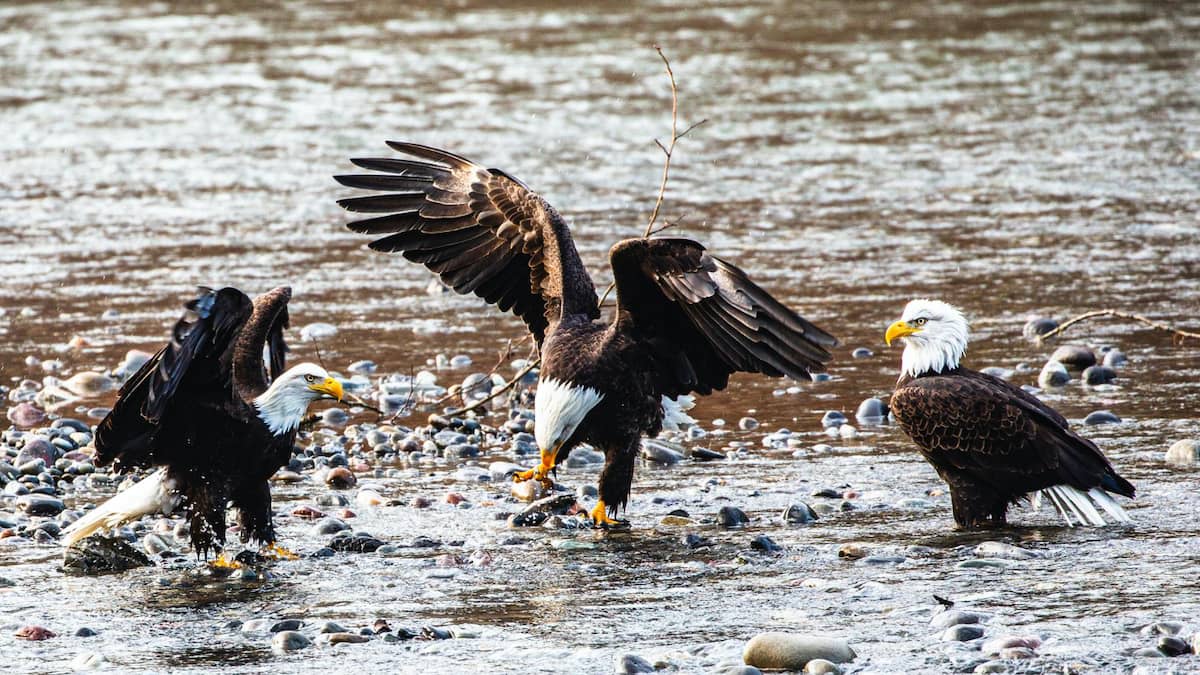Contents
Get ready to be amazed by the awe-inspiring might of the eagle, a majestic bird of prey that has captivated hearts and minds for centuries. With its powerful wingspan and razor-sharp talons, the eagle is a formidable hunter that reigns supreme in the avian world. Renowned for its extraordinary ability to spot and snatch fish from the water, the eagle’s aquatic hunting prowess is sure to leave you in awe. Prepare to embark on a journey of discovery as we unravel the secrets of this magnificent creature.
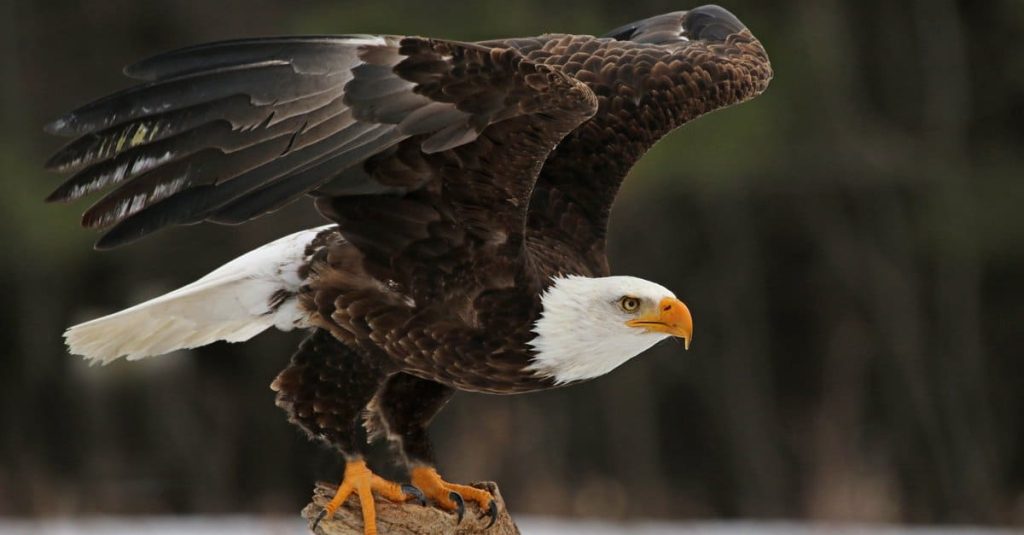
Habitat and Distribution
Eagles, the majestic and powerful birds of prey, are found in various habitats across the globe. From the icy tundra of Alaska to the lush rainforests of South America, these incredible creatures have adapted to thrive in diverse environments. Whether you find yourself in the soaring heights of the mountains or near the sprawling coastlines, there’s a good chance you may encounter these magnificent raptors.
Morphology and Anatomy
Eagles possess a striking physical appearance that sets them apart from other birds. They have strong, muscular bodies with hooked beaks designed for tearing apart their prey. Their sharp talons are perfect for catching and grasping their victims. With keen eyesight that surpasses that of humans, Eagles are well-equipped hunters capable of locating prey from great distances.
Nests and Nurturing
Eagles are known for their impressive nests, which can be massive structures made from twigs and branches high up in trees or on cliff faces. These nests, known as eyries, are not only sturdy but also provide a safe haven for the eagle’s young. The nurturing instincts of these birds are remarkable, as they diligently care for their offspring, protecting them from predators and ensuring a sustainable food supply.
Migration Patterns
Migration is a remarkable phenomenon observed in many eagle species. These resourceful creatures undertake long and arduous journeys in search of better climates and plentiful food sources. As the seasons change, eagles gather in large flocks to embark on their migratory adventures. From the Arctic regions to the vast grasslands, their passage leaves an indelible mark on the world, showcasing their remarkable adaptability.
Types of Eagles
Eagles come in a variety of species, each with its own unique characteristics and habitats. Let’s take a closer look at a few prominent members of the eagle family:
Bald Eagle
The bald eagle, recognized as the national bird of the United States, is an icon of strength and freedom. With its distinctive white head and tail contrasting against a brown body, this magnificent bird is a sight to behold. Found predominantly in North America, the bald eagle is often associated with coastal areas and large bodies of water due to its affinity for fish.
Golden Eagle
The golden eagle, aptly named for its beautiful golden-brown plumage, is a globally distributed species. These birds are renowned for their incredible agility and predatory prowess. Spanning across Europe, Asia, North America, and Africa, they can be found in various habitats, from mountains to grasslands. The golden eagle’s piercing eyes and immense wingspan are a testament to its hunting abilities.
Harpy Eagle
The harpy eagle, considered one of the largest and most powerful eagles in the world, is native to the rainforests of Central and South America. With its distinctive facial feathers and gray plumage, this bird commands attention. The harpy eagle’s unique adaptations, such as its massive talons and broad wings, reflect its specialization as a formidable hunter in the dense jungle canopy.
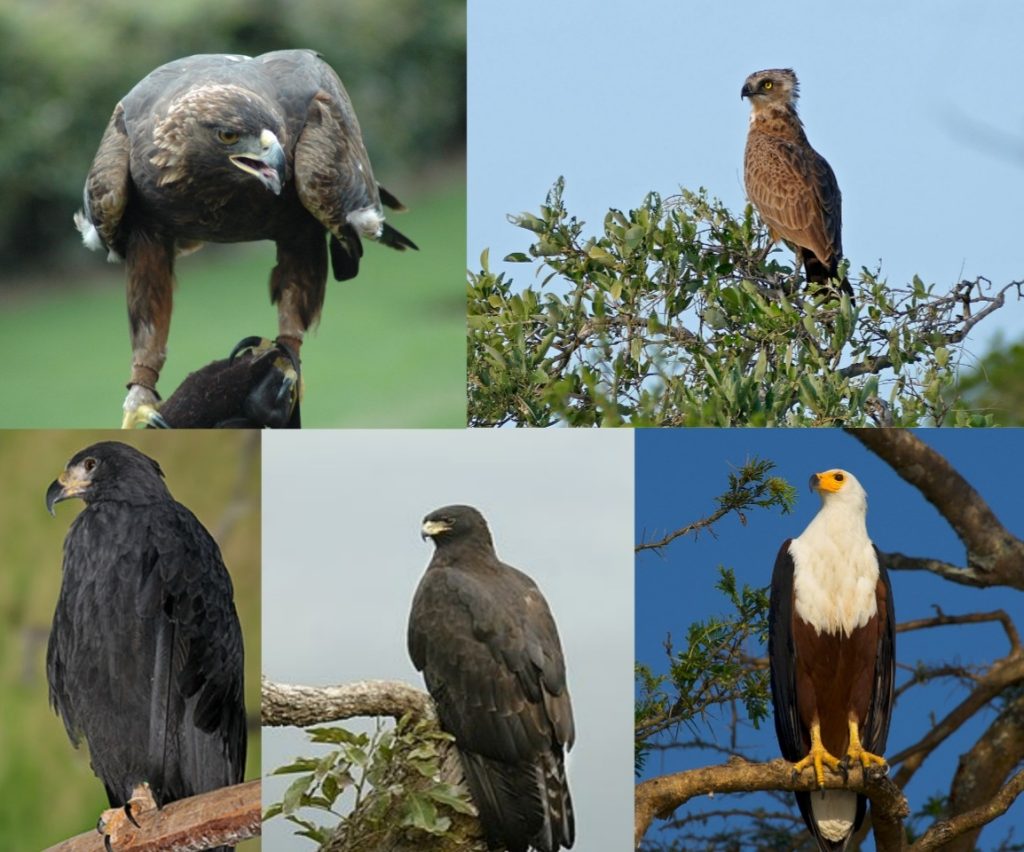
Physical Characteristics
Eagles exhibit an array of physical characteristics that contribute to their commanding presence in the skies. Let’s explore some of these remarkable features:
Size and Weight
Eagles are known for their impressive size, with some species reaching extraordinary dimensions. The Steller’s sea eagle, for example, can weigh up to a whopping 15 pounds (7kg) and have a length of over 3 feet (1 meter), while the Philippine eagle boasts a wingspan of up to 7 feet (2.1 meters). These dimensions highlight the immense power and grandeur of these avian predators.
Wingspan and Flight
The wingspan of an eagle is a defining trait that affords them unparalleled flight capabilities. With broad wings that allow for soaring effortlessly through the skies, eagles are known for their graceful movements and agile maneuvers. Whether gliding across vast expanses or diving with precision, these birds capitalize on their impressive wingspan to conquer the open sky.
Feathers and Coloration
Eagles don striking plumage that accentuates their beauty and helps them blend into their surroundings. Their feathers exhibit an array of hues, from rich browns to vibrant golds and brilliant whites. Through the process of molting, they maintain the health and functionality of their feathers, ensuring optimal flight and insulation. These marvels of nature have evolved to possess feathers that contribute not only to camouflage but also to the iconic appearance that has captivated humans for generations.
Hunting and Feeding Habits
Eagles are apex predators renowned for their exceptional hunting skills. Their tactics and abilities make them a dominant force in the avian world. Let’s delve into the fascinating world of an eagle’s hunting and feeding habits:
Eagle Eyesight
The eyesight of an eagle is extraordinary, providing them with unrivaled visual acuity. Their eyes are proportionally larger than those of humans, equipping them with the ability to spot prey from incredible distances. This exceptional vision allows eagles to survey vast landscapes or bodies of water, keenly detecting even the slightest movement that may reveal potential food sources.
Predatory Techniques
Eagles employ a range of techniques when hunting for their next meal. From soaring high above the landscape to perching patiently, they capitalize on their sharp instincts to locate unsuspecting prey. Dive-bombing from great heights, surprising their quarry with sheer speed and agility, is a favored hunting method. Their precise and efficient strikes are executed with incredible accuracy, ensuring a successful capture.
Prey Selection
Prey selection varies across eagle species, influenced by factors such as habitat and availability. Fish form a significant portion of the bald eagle’s diet, while the golden eagle’s menu often includes small mammals and birds. The harpy eagle, being a resident of the rainforest, specializes in hunting sloths and monkeys. Each species has honed its hunting techniques to adapt and thrive in their respective environments.
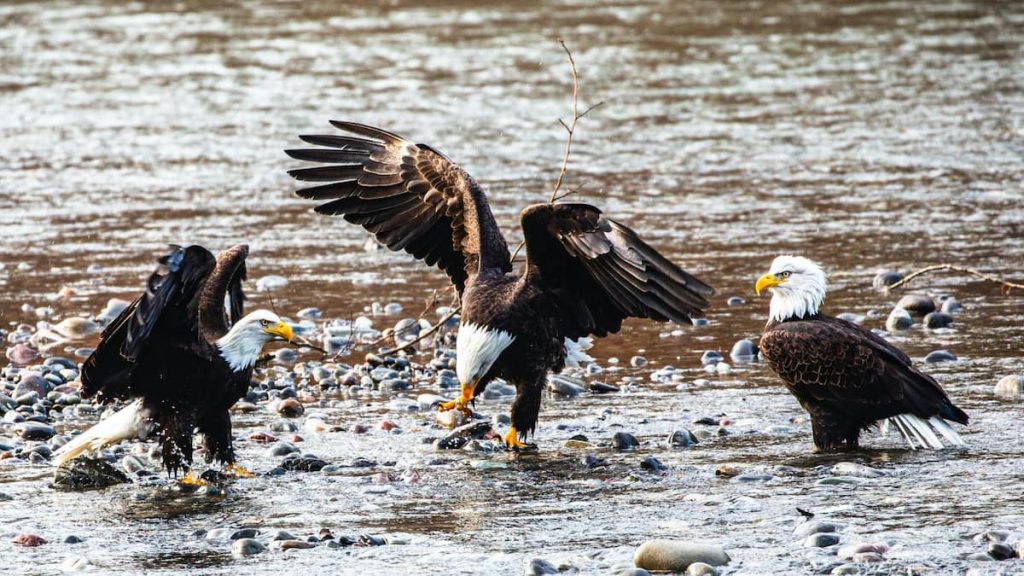
Behavior and Social Structure
The behavior and social structure of eagles provide valuable insights into their fascinating lives. While individual species may display unique traits, some common characteristics can be observed:
Solitary Nature
Eagles are primarily solitary creatures, preferring to spend their time alone or in the company of their mate and offspring. This solitary nature allows them to focus on hunting, nesting, and maintaining their territories without the interference of others. Exceptions to this behavior are often observed during the breeding season when pairs work together to raise their young.
Territorial Defense
Eagles fiercely protect their territories, often engaging in daring aerial displays to ward off intruders. These displays, which involve spectacular flight maneuvers and vocalizations, serve as a warning to others to stay away. Territories vary in size depending on the species and availability of resources, with some encompassing large expanses of land.
Courtship and Mating
Courtship rituals among eagles can be elaborate and beautiful, involving mesmerizing aerial displays and vocalizations. Potential mates engage in intricate dances, showcasing their agility and strength to impress their partner. Once a pair bond is formed, eagles engage in nest-building together, cooperatively raising their young, and establishing a strong and enduring bond.
Conservation Status and Threats
While eagles have long symbolized strength and freedom, their populations face various threats in the modern world. Understanding these challenges is critical in ensuring their survival:
Population Decline
Eagles have experienced declines in population numbers due to habitat destruction, pollution, and human encroachment. These factors, coupled with climate change and the disruption of ecosystems, pose significant challenges for the long-term survival of these magnificent birds.
Habitat Loss
As human development expands, eagle habitats are shrinking, leading to the fragmentation and destruction of their natural environments. This loss of suitable habitats limits their access to food sources and disrupts breeding and nesting cycles, pushing some species to the brink of extinction.
Poaching and Hunting
The illegal trade in eagle parts, such as feathers and talons, poses yet another threat to these birds. Poaching for cultural or commercial purposes not only undermines the conservation efforts but also depletes populations, perpetuating a cycle of decline.
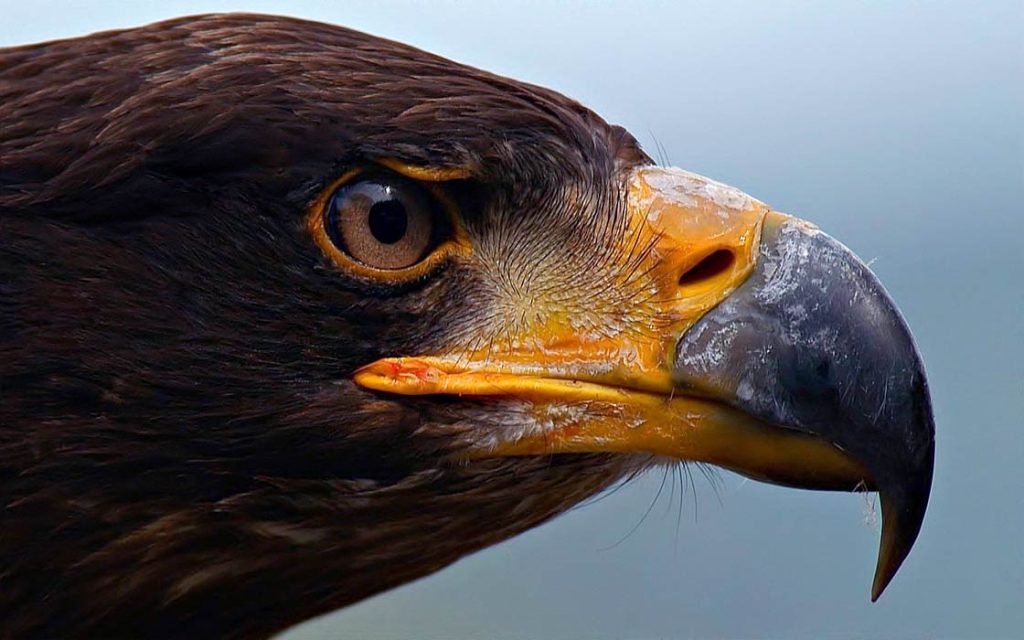
Cultural Significance and Symbolism
Throughout human history, eagles have held profound cultural significance and been revered as symbols of power, strength, and spirituality. Let’s explore their significance in different realms:
Eagle as National Birds
Numerous countries around the world have chosen the eagle as their national bird, embodying the values and ideals of their respective cultures. The bald eagle, for example, is an emblem of pride and liberty in the United States, while the Philippine eagle represents the resilience and biodiversity of the Philippines.
Symbolic Representations in Mythology
Eagles are often revered in mythology and folklore, symbolizing divinity, wisdom, and protection. In Greek mythology, the eagle was associated with the mighty deity Zeus, representing authority and vigilance. In Native American cultures, eagles hold sacred and prominent roles, believed to carry prayers to the heavens.
Eagle in Art and Literature
Eagles have captivated artists and writers throughout history, inspiring countless works of art and literature. From ancient cave paintings to contemporary sculptures, their regal presence has been immortalized in various mediums. In literature, these majestic birds have been depicted as noble and influential characters, reminding us of their symbolic significance and captivating allure.
Interactions with Humans
Humans play a crucial role in the conservation and preservation of eagle populations. Here are some ways in which our interactions with these incredible birds can make a difference:
Eagle Conservation Programs
Dedicated conservation organizations and initiatives have been established worldwide to protect and rehabilitate eagle populations. These programs focus on habitat preservation, public awareness, and efforts to combat threats, ensuring a brighter future for these magnificent creatures.
Tourism and Wildlife Watching
Eagle tourism and birdwatching have gained popularity, allowing enthusiasts to observe these majestic birds in their natural habitats. Responsible and sustainable tourism practices can generate income for local communities while fostering a deeper appreciation for eagle conservation and protection.
Eagles in Captivity
Some organizations and wildlife centers work tirelessly to rehabilitate injured or orphaned eagles, providing them with a safe haven for rehabilitation or lifelong care. These efforts not only contribute to the individual eagles’ well-being but also contribute to education and research, raising awareness about the importance of protecting their wild counterparts.
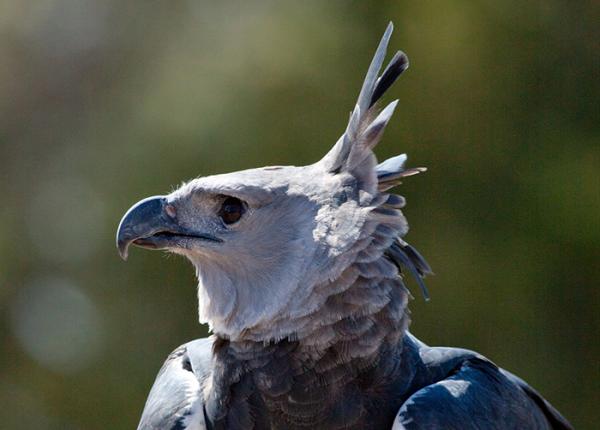
Noteworthy Eagle Species
While all eagle species are noteworthy in their own right, a few stand out as particularly unique and awe-inspiring:
Philippine Eagle
The Philippine eagle, often referred to as the “monkey-eating eagle,” is one of the world’s most critically endangered raptors. With its distinctive shaggy crest and imposing size, this bird is an emblem of the Philippines’ rich biodiversity. Conservation efforts aim to protect its remaining habitat and ensure the survival of this magnificent and rare species.
Steller’s Sea Eagle
The Steller’s sea eagle is a true marvel of nature. With its impressive size and stunning appearance, it is often regarded as the heaviest eagle in the world. Thriving in the icy landscapes of Russia and Japan, this species has become an iconic symbol of the northern regions, captivating anyone fortunate enough to witness its majestic flight.
White-tailed Eagle
The white-tailed eagle, also known as the sea eagle, is a species that has made a remarkable comeback from near extinction. Once on the verge of disappearing from the skies of Europe, dedicated conservation efforts have allowed this majestic bird to reclaim its place in the wild. With its distinctive white tail and impressive wingspan, the white-tailed eagle remains a symbol of conservation success.
Eagle in Popular Culture
Eagles have made a lasting impact on popular culture, making appearances in various forms of media. Their strength, grace, and symbolism have captivated audiences worldwide:
Eagle in Films and TV Shows
Whether soaring majestically overhead or depicted as fictional characters, eagles have made their mark on the silver screen. From the iconic representation of the bald eagle in patriotic films to the mesmerizing flight sequences in nature documentaries, these birds continue to leave audiences in awe.
Eagle as Mascots
The regal nature of eagles has made them popular choices for sports team mascots. Eagles are often associated with values such as power, resilience, and victory, making them fitting symbols for athletic teams seeking to embody these traits.
Eagle in Sports
Various sports incorporate eagles into their symbolism and traditions. From the Philadelphia Eagles of the NFL to the German national football team, these birds of prey feature prominently in the world of sports, embodying the competitive spirit and tenacity often associated with athletic endeavors.
In conclusion, eagles hold a special place in the natural world and in the hearts of humans. With their awe-inspiring physical attributes, remarkable hunting skills, and cultural significance, these magnificent birds continue to captivate us. However, the challenges they face highlight the urgent need for conservation efforts and responsible interactions with these incredible creatures. By appreciating and protecting eagles, we ensure that future generations can also marvel at their majestic presence in the world.

